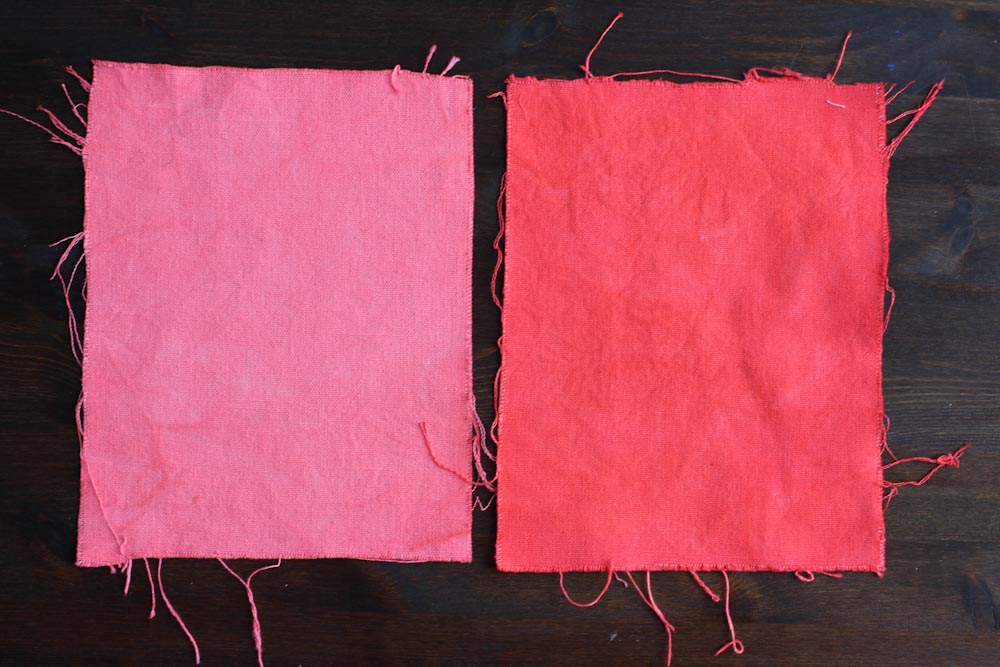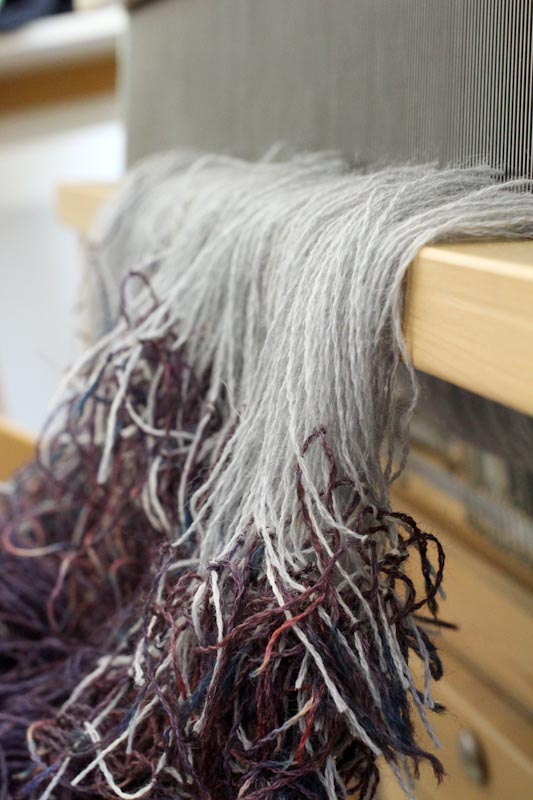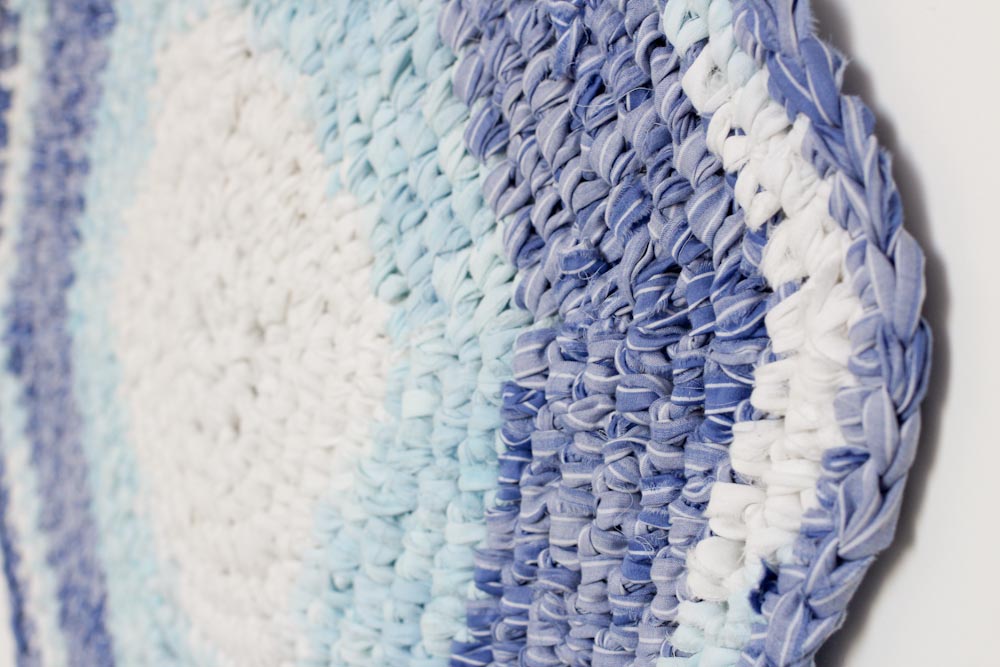Don't Skip the Salt
Recently I've been getting dizzy spells when I exercise. Like hearing-loss, tunnel vision, about to pass out sort of dizzy spells. (Don't worry I'm fine.) After one very expensive visit to the cardiologist, he gave me this advice which I probably could have read on the internet if I had looked into it hard enough: "You have low blood pressure. [Duh.] Don't stand up too quickly. [Duh.] You need to be well hydrated to prevent fainting when exercising. [Duh.] And if you've done that and it's still happening, add salt to your diet. [Wha?] As much as you want. [YES!]" So I shouldn't skip the salt at meals. Just make sure there isn't shitty food underneath that salt. Done and done. Did I mention that on the first date with my now fiancee, I told him my favorite dessert was a side of bacon?
[This is where I give permission to all the non-dye-information-seeking people to leave. :)]
 But this post isn't just about adding salt to my regular diet. Obviously. This post is about the importance of adding salt when dyeing with reactive dyes other wise known as MX procion dyes. Dyes used to color cellulose fibers such as cotton, rayon, and hemp.
But this post isn't just about adding salt to my regular diet. Obviously. This post is about the importance of adding salt when dyeing with reactive dyes other wise known as MX procion dyes. Dyes used to color cellulose fibers such as cotton, rayon, and hemp.
I have been ignoring these dyes for a while. Mainly because I haven't been able to achieve awesome vibrant color-fast hues like I get with acid-based dyes. And that has been INCREDIBLY FRUSTRATING.
So I decided to figure out why I wasn't getting what I expected out of these dyes, the only way I know how. Chemistry lab style.
I started by researching. Several instruction sets on reactive dyeing told me that the amount of water didn't matter as long as the fiber had enough room to "swim" around in. If you want even coverage, you need the right amount of water [in the right shaped container] to cover your fabric without it folding on itself. Also, make sure to stir the pot a lot. But one source said salt wasn't needed, and another source said it was imperative. On top of it, I found 3 different water to salt ratios to use. Confusing.
So I put together a small test setup where I tested just the addition of salt. Two yogurt containers, each with the same amount of dye, water, soda ash and fabric. One did not have salt, the other contained salt in an amount that correlated with the amount of water I used. I used a highest salt to water ratio I found.
Let's see the results:
Holy. Crap. Look at that difference. (True, I didn't get even coverage, but that's because I didn't have the right shaped container for the thickness and stiffness of the fabric I used.)
[This is where I give permission for the non-science-y people to leave.]
So why is salt so important? It apparently boils down to some basic chemistry. This is what I found, paraphrased:
[gn_quote style="2"]When a fiber is immersed in water, it develops a negative electrical charge at the surface, to balance the positive charge inside the fiber. MX dye will split into Na+ (sodium cation) and dye- (dye anion). The positive charge in the fiber is enough to push away the dye, since like repels like. Also, the dye is much more interested in reacting with the water. Enter salt.
When salt is added to water it breaks down into Na+ and Cl-. It is referred to as an electrolyte because it makes the solution electrically conductive. This means it can "mask" the charge at the surface of the fiber. [Imagine the salt ions pulling away the curtain of positive charge on the fiber so that the dye ions can waltz in and bond to the fiber. A little fluffy, but helps to picture right?] Common salt is used because it is pH neutral, easy and safe to handle and cheap.
-Taken from my college notes![/gn_quote]
Now some of you are wondering, "But I'm not bothered by the pastel color that the non-salt bath created." I'm with you. Pastel lovers of the world unite. But this is the other reason why I'm sharing this post: now the soft red on the left side can be achieved simply by using less dye. Use salt in your dye bath, less dye can be added, more dye is exhausted into the fiber, and less dye is poured down the drain at the end. Win-win. YAY!
My love of Watercolors
I used to paint with watercolors in high school and am getting back into it. I forgot how much I love it. It's amazing how similar it is to dyeing - they are both transparent mediums (which can become opaque in special situations). That's probably why I gravitated to dyeing. One day, I was experimenting with dye on raw silk. I remembered a technique from a middle school art teacher where if salt is layered on top of watercolor paint, it creates really interesting sunburst effects after it drys. Perhaps it could work on fabric? So I tried:
 I put salt over some of the purple dye to see if it would help it to spread. Instead (and I'm hoping you can see this in the picture) it helped set the color of the purple dye. The areas on the left and bottom (the deeper plum color) had salt on them, and the area on the top right (lighter lavender) did not. Interesting.... more on this salt thing later.
I put salt over some of the purple dye to see if it would help it to spread. Instead (and I'm hoping you can see this in the picture) it helped set the color of the purple dye. The areas on the left and bottom (the deeper plum color) had salt on them, and the area on the top right (lighter lavender) did not. Interesting.... more on this salt thing later.
Ikat Tie-on
Remember that ikat warp I dyed? Well here it is in all its glory!
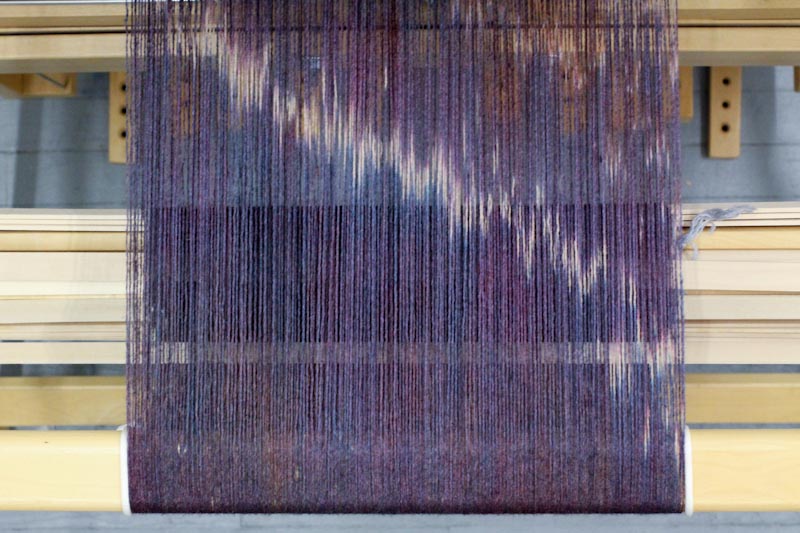

I attempted tying this warp to an existing warp already on the loom. I've done this only once before although had a terrible experience with it; I ended up taking off the old warp and just re-sleying my loom with the new warp. Mostly because I am not an great at knot tying. But of course, if at first you don't succeed...
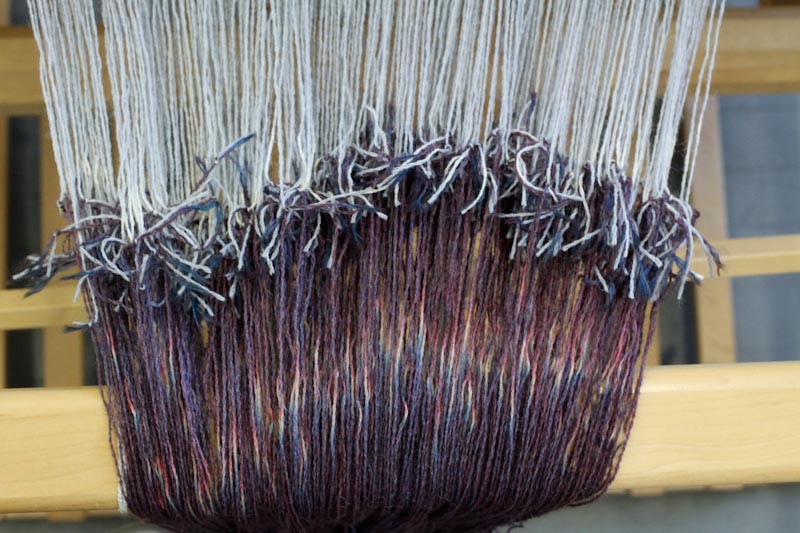
I was pleasantly surprised it worked this time! I had a few knots come undone, but otherwise it went off without a hitch!
NYSID: Jack Lenor Larsen
Last month New York School of Interior Design had an exhibition on Jack Lenor Larsen who was a prolific textile designer who started his career in the 50's. Here are just a few shots of the panels they had on display. Unfortunately my photos don't do them justice. This a gorgeous batik that references waves:
I could stare at this one for hours and I'm not entirely sure why:
I love the diagonal lines formed on this one. It got me wondering how I could create something like that on my own loom:
And this last one features a hand painted warp. Lovely!
HNY!
Ikat Experiment
Remember all that dyeing I did last month? Well, here is the ikat warp I attempted:



Can't wait to see what this looks like on the loom!
Shout out!
Thanks to Craftland! for giving me a shout out as one of their new craft vendors in last weeks email blast! Whoo-hoo!

And if you're in the Providence area, check out their holiday shop.
New Items!
Craftland!
So as many of you know, I've been telling you that I'm applying to craft fairs and the like, but the reality is I've chickened out a little. It just seems so... intimidating. I mean, you need so much stuff - tables, chairs, canopies, and a way to transport all of it from A to B. Just thinking about it makes me anxious and my head starts to hurt. But I've heard from other artists and crafters that it's a must for growing one's business. So I branched out in August and applied to a place called Craftland! Why this one? Baby steps, people. Bear with me. It's a consignment craft fair in Providence. I send them stuff, they sell it for me, and for their troubles they get a portion of the profits. What a glorious thing.
But I've heard from other artists and crafters that it's a must for growing one's business. So I branched out in August and applied to a place called Craftland! Why this one? Baby steps, people. Bear with me. It's a consignment craft fair in Providence. I send them stuff, they sell it for me, and for their troubles they get a portion of the profits. What a glorious thing.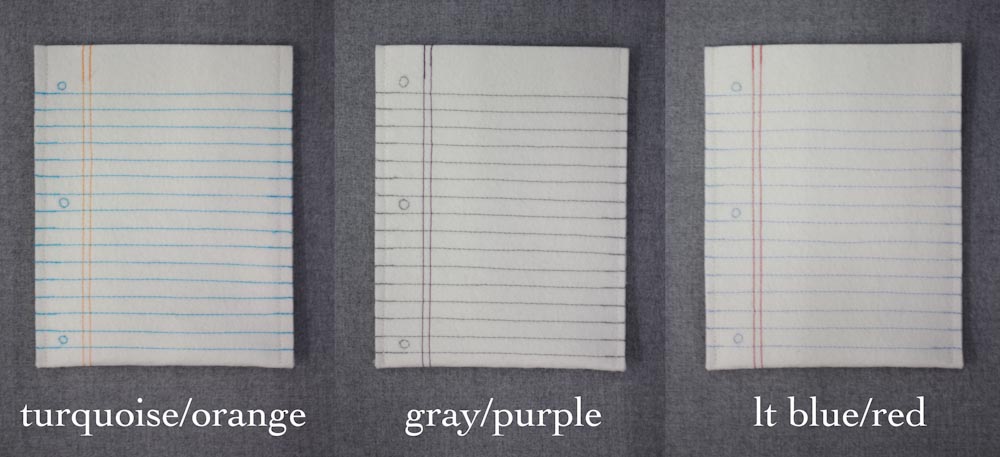 The application process was relatively easy and luckily I got in! I was super thrilled when I heard. Since it's so big (160 crafters) they asked for specific items and in this case my e-readers. So I streamlined what I would offer (which was a headache in itself) and sent them off last week. Even if I don't sell any, I figure it's great exposure!
The application process was relatively easy and luckily I got in! I was super thrilled when I heard. Since it's so big (160 crafters) they asked for specific items and in this case my e-readers. So I streamlined what I would offer (which was a headache in itself) and sent them off last week. Even if I don't sell any, I figure it's great exposure!
 The show opens November 23rd, 2012 and if you're in the Providence area, check it out!
The show opens November 23rd, 2012 and if you're in the Providence area, check it out!

